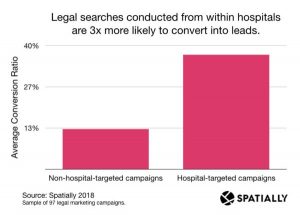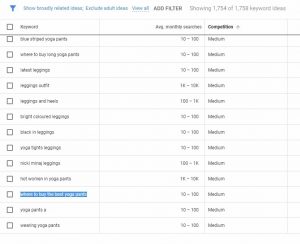September 28, 2015

Opening a savings account is one of the first steps toward reaching a financial goal—they’re ideal for building a nest egg and financial discipline. But it’s not the right place to put your money if you’re looking for high returns, especially in today’s low-rate environment.
Lower deposit rates might be with us for a while; according to The New York Times, the last time the U.S. Federal Reserve made a rate increase was nine years ago, and Janet Yellen announced last week that the Fed would not be raising rates this month.
For better returns, check out these 10 alternative interest-bearing investments that are more lucrative than a savings account.
1. Certificates of Deposit (CDs)
A CD is a deposit product that offers a higher yield for keeping your money locked away for a predetermined period of time. Make one lump deposit, and your funds accrue interest at a fixed interest rate, which usually increases the longer you set your term. CDs range from short to long terms, ranging from one month to five years. For a 36-month CD, for example, you might be able to earn up to a 1.23% APY, according to current FDIC rate caps.
Depending on the bank or credit union you choose, CDs also come in jumbo form for deposits higher than $ 100,000. They’re also insured up to $ 250,000, if issued from an FDIC-backed bank. But remember that your money usually can’t be withdrawn without penalty from a CD.
2. Stocks
Investing in the stock market takes a lot of mastery, but with time, patience, and a nose for the right investments, it can pay off in big ways. By investing, you’re placing stock in a company’s performance and value.
Budding investors can find information about most publicly traded companies on their individual websites, but your best bet is to consult a stock broker. Paying for a professional’s guidance and advice can maximize your potential earnings, as well as knowing when to buy and when to sell.
The S&P 500 tracks 500 stocks meant to indicate the performance of U.S. equities. Here’s a look at its performance over the last 12 months.
3. Money Market Accounts and Funds
If you don’t want to deviate too far from the standard savings account, you can deposit your funds into a money market account. Interest rates are on par with a CD (today’s average is around 1.00%), but unlike a CD, your money is liquid, meaning you can withdraw money without incurring penalty fees. But another, higher-yield option is a money market fund. These accounts raise dividends on the success of short-term securities and commodities, like government and treasury bills, or printed commercial paper.
4. I-Bonds
The “I” in I-bond stands for inflation, which is what the interest rate of these investments is based upon. I-bonds are Treasury-issued products that can be purchased up to $ 10,000 per year, in varying denominations. I-bonds are time-sensitive, so you’ll need to be OK holding onto your investment for at least one year before it becomes liquid; plus, they’re tax-free until you cash in your earnings.
If your interest in I-bonds has been piqued, consider some other alternatives first: The current rate of inflation is at 0 percent through Oct. 31, but might rise in the following period.
5. Municipal Bonds
Are you active in your community and aware of the goings-on of your city government and school district? If so, you might want to invest some money into it. Municipal bonds, as the name implies, are issued by municipalities for the purpose of getting investors to pool their money together and finance road, infrastructure and school projects. Yield rates are respectable, currently averaging between 2% and 3% for bonds ranging from 10 to 30 years in maturity. According to Good Financial Cents, if you hold onto your bond for the duration of its full maturity, you’ll likely earn your full investment back, plus interest.
6. Marketplace Lending
Marketplace lending is one of the newest ways to borrow and invest money, thanks to the Internet. On sites like Prosper, Upstart or Lending Club, you have the opportunity to invest funds to people looking to borrow money, who may seek out this new way of lending to pay down debt or finance other goals.
There is some risk in fronting money to an anonymous borrower, especially if there’s risk of loan default, but the vetting process is thorough; pick the right investment with a trustworthy source, and you can stand to earn up to 9 percent of what you invest up front, according to U.S. News & World Report. With social lending, there’s no limit, either. Like your own mini-stock market, invest $ 100 here, $ 1,000 there, and you can stand to earn some decent cash after a while.
7. Rewards Checking Accounts
Although checking accounts don’t offer more interest than savings accounts on average, rewards checking accounts sometimes offer higher yields to depositors who meet certain monthly requirements. Bank of Internet USA’s Rewards Checking Account, for example, gives back a 1.25% APY return and several purchase rewards points as long as account holders make 10 debit card transactions per month, among other conditions.
8. Roth IRAs
A Roth IRA (individual retirement account) is designed primarily to save for your retirement. An IRA allows you to contribute money into the account, tax-free, until it’s time to withdraw, typically at age 59 and a half. According to the Internal Revenue Service, IRA contribution limits in 2015 are $ 5,500 per individual and $ 6,500 for those ages 50 and older. While this might not yield you any liquidity at the moment, an IRA can greatly impact your savings long term due to compound interest.
9. Prepaid Credit Cards
When you think of a credit card you likely think of spending rather than saving. But some cards can also serve as useful savings tools. Many prepaid cards, according to U.S. News & World Report, are accompanied by savings accounts with higher interest rates than average. The Mango MasterCard is one example of such, returning yields of nearly 6.00% APY on its accompanying savings account.
10. Paying Down Debt
How, you might ask, does paying money translate to saving money? This can be one of the most strategic, yet simplest, ways to save money, since the less money you owe, the more there is to save. If you’re faced with some outstanding debt, like a car loan or credit card balance, take the steps to pay it down as seamlessly as possible. Cut back on your discretionary purchases, and find new and creative ways to budget to free up funds. The 50-30-20 method is popular among consumers and experts.
In aggregate, this is how much credit card debt Americans have. Use the extra proceeds from paying it down to invest in one of the above savings alternatives on this list.
Business & Finance Articles on Business 2 Community
(283)
Report Post








